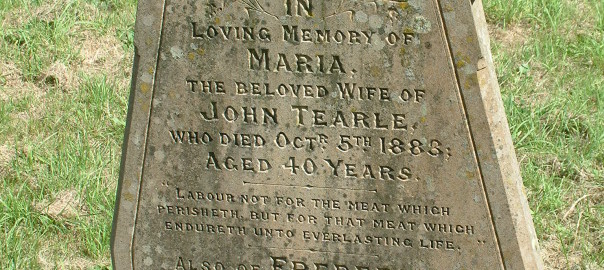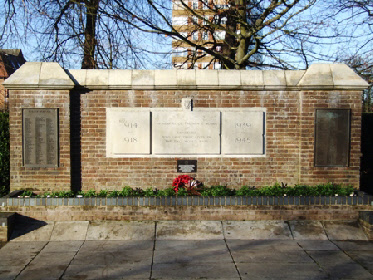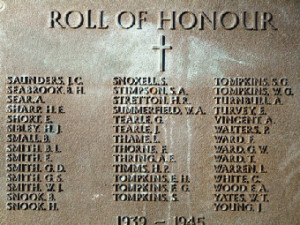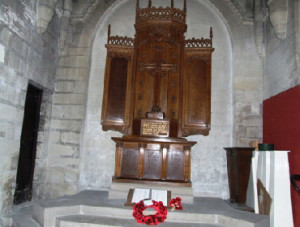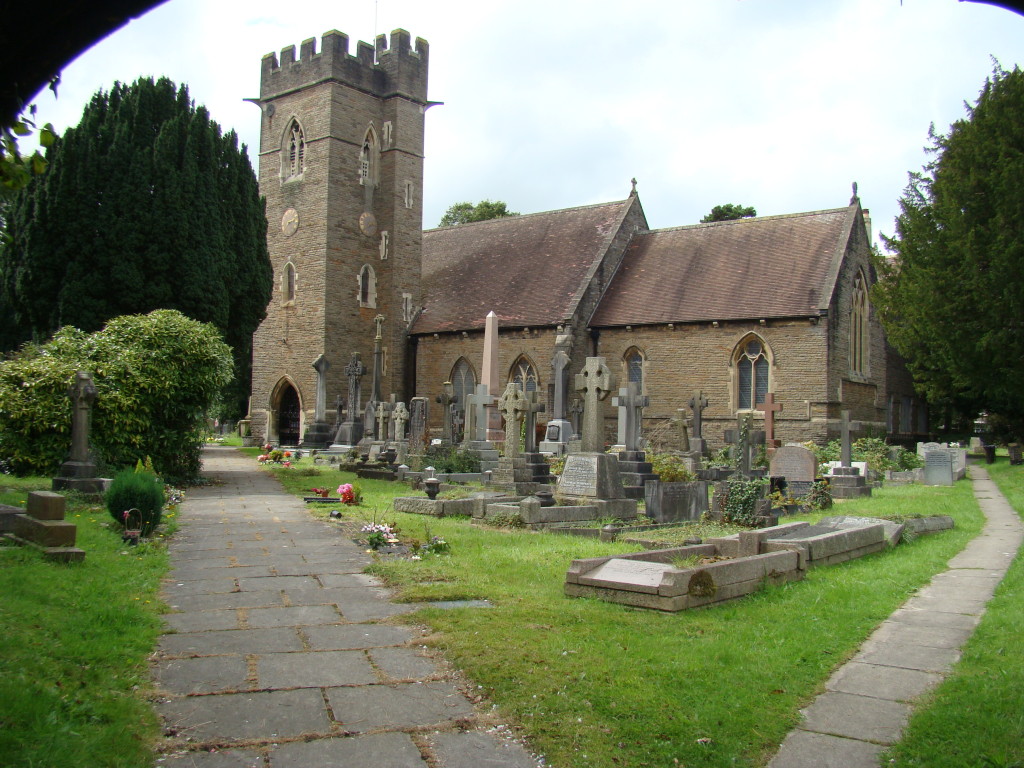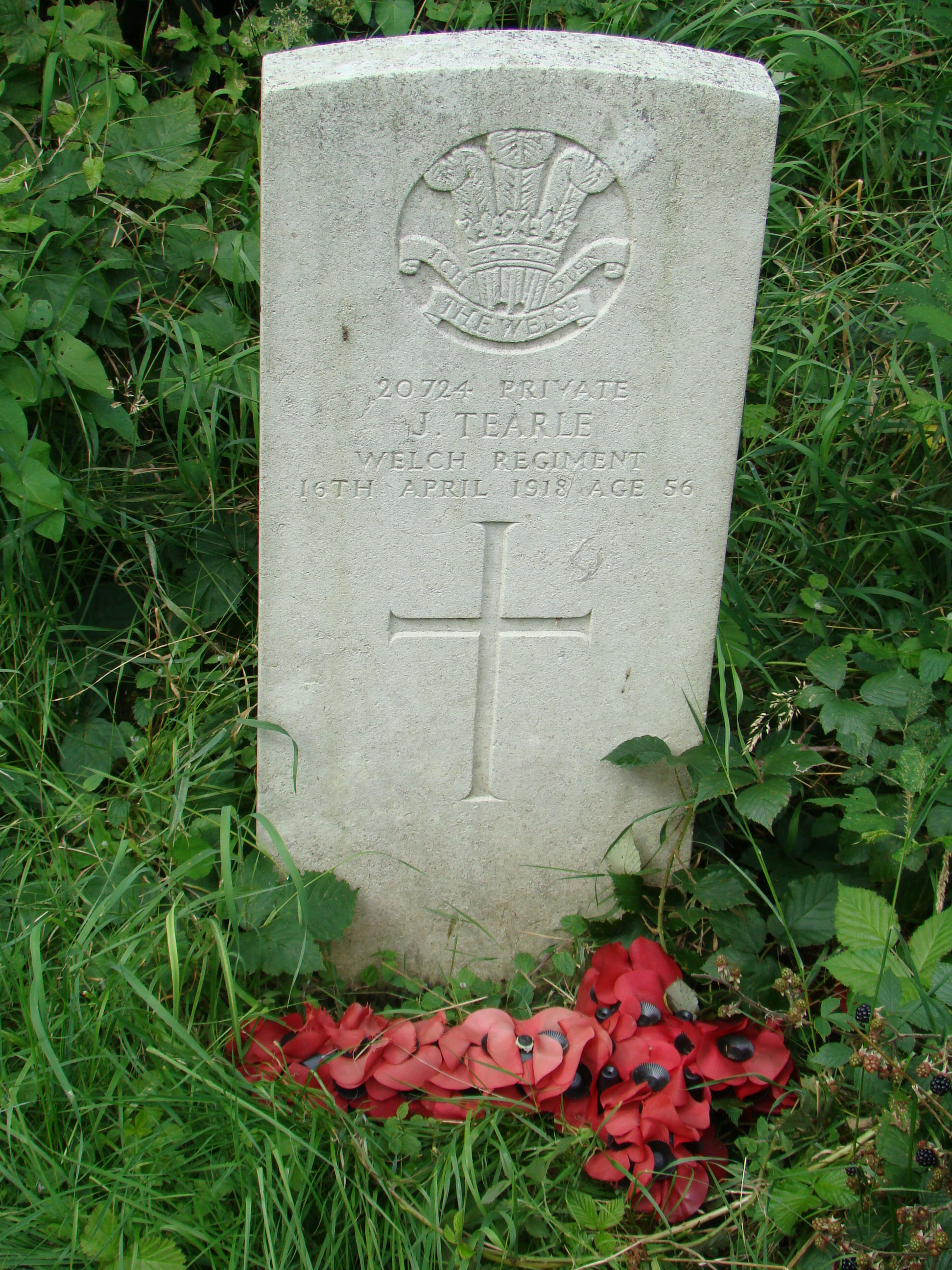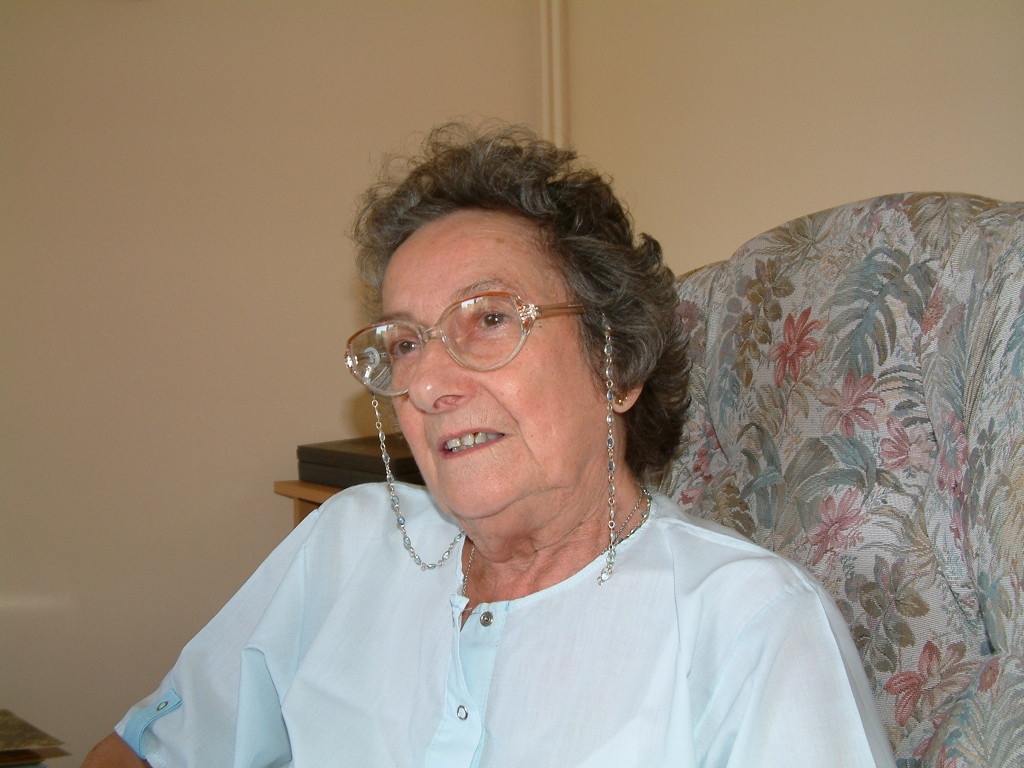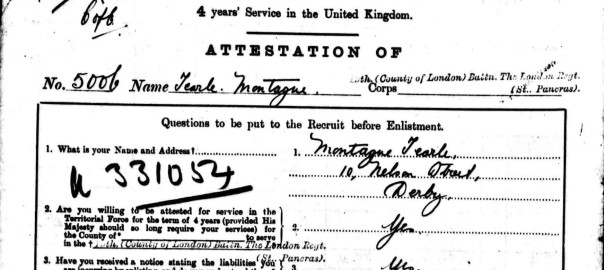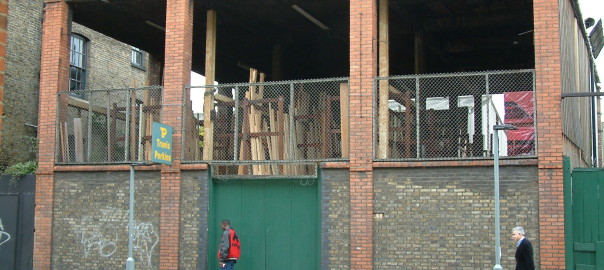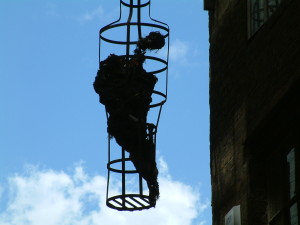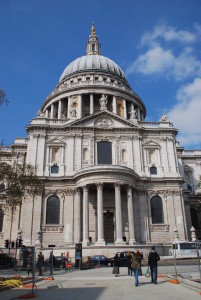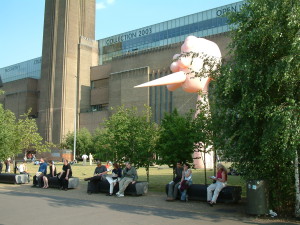I have decided to have a long look at my gg grandmother, Mary nee Andrews of Eggington, a village that is only a short walk from Stanbridge. Cousin Thelma called her “Much Married Mary” although she never told me what that meant. In Mary’s case it is a story of three marriage certificates.
Here she is in the 1841 census, aged 11 (b1830) and still at home in the hamlet of Eggington:
1841 = Mary Andrew p1 11 at home in Eggington
1841 = Mary Andrew p2 Thomas 6 Amos 4m in Eggington
Her father is James, aged 40 (b1801) and her mother is Sarah, also aged 40. I have on record that her maiden name was Moore, and I have given 1801 as her birth date given the census return. Mary, then, has a sister, Dinah, 15 (b1826), a brother Abel, 14 (b1827) then Mary, then Sarah, 8 (1833), a brother Thomas 6 (b1835) and little Amos 4m.
I have added these children into the Tree.
John Andrews sent me the following information in Dec 05 and you’ll notice that some of the names below are not in the census return, so I guess not at home that night:
JAMES ANDREWS was born June 2, 1799 in Eggington, Beds, and died 1851 in Eggington, Beds. He married SARAH MOORE, daughter of William Moore and Elizabeth Bishop.Children of James Andrews and Sarah Moore are:
ABEL ANDREWS, b. 1827; d. June 12, 1864.
AMOS ANDREWS, b. December 28, 1823, Eggington, Beds; d. January 1, 1837.
DINAH ANDREWS, b. June 26, 1825; m. DAVID SCRIVNER.
MARY ANDREWS, b. 1830, Eggington, Beds.
SARAH ANDREWS, b. 1833, Eggington, Beds; d. March 13, 1861.
THOMAS ANDREWS, b. April 16, 1835.
WILLIAM ANDREWS, b. June 6, 1820, Eggington, Beds; d. February 17, 1907, Hooper – Weber – Utah.
HANNAH ANDREWS, b. 1826, Eggington, Beds.
AMOS ANDREWS, b. February 3, 1841, Eggington, Beds.
JOHN ANDREWS, b. March 30, 1851; d. April 2, 1851.
You’ll also notice that one of this family, William 1820, went off to Utah, after marrying one of the Pantling girls. There were several Pantling families in Eggington.
Dinah married David Scrivner, and she was a witness to the marriage of Amos Tearle, my great-grandfather Levi’s brother. Also there was George Blake, who was married to Amos and Levi’s sister, Sarah 1853 Stbg. Both men (Amos and Levi) are Mary’s sons. Just a snapshot of village life, really.
So here is the first marriage certificate: James 1826 Stbg, my gg-grandfather and Mary Andrews of Eggington, married at a very young age, by banns, in Stanbridge Church on July 26, 1847. You can see their entry in the banns register, which, in spite of its age, is still being added to in the “marriage season” even in the 21st Century.
However, I have the marriage certificate:
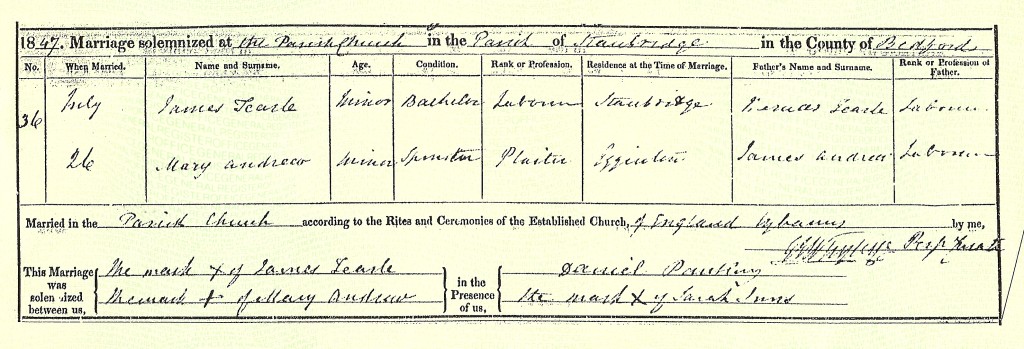
James 1827, my gg-grandfather, marries Mary Andrews in 1847
In the 1851 census we can see Mary and James Tearle in Stanbridge with their first child, Levi, just 8m old.
1851 = James 1828 Stbg p1 Mary 23 in Stbg
1851 = James 1828 Stbg p2 Levi 8m in Stbg
They are living right next door to Joseph 1798 Stbg and Maria nee Millings of Soulbury.
One day, I must track the spread of Methodism amongst the Tearles. We know from the Dunstable Methodist circuit records that Joseph and Maria were Methodists and we know that Phoebe nee Capp was also a staunch Methodist; how much did this influence James and Mary and therefore Levi? Levi is my great-grandfather who moved to Wing, set up a successful smithy there and was the superintendant of the Sunday School in the Primitive Methodist Chapel in Church St, now a private residence.
Joseph and Maria are much older than James and Mary. Joseph 1798 Stbg is one of the grandsons of Joseph 1737 and Phoebe nee Capp. These are two parallel families living side by side in Stanbridge; Joseph 1798 grandson of Joseph 1737 and James g-grandson of John 1741, the brother of Joseph 1737. I know from living for 10yrs in a village of 100 houses, that these two families would have known exactly what their relationship was.
In 1861, Mary and James are living in Tilsworth Rd, Stanbridge and have their children:
1861 = James 1827 Todd Mary 31 Levi 11 Sarah 8 Elizabeth 5 Isabella 3 in Stbg.
Amos was b July 1861, so he missed the April census day.
In 1871 all the family is there, living in Leighton Rd, Stanbridge, with an addition – James and Mary have just become grand-parents:
1871 = James 1828 Tod Mary 40 Eggnt Sarah 18 Elizabeth 15 Isabella 13 Amos 9 Mary gd 2m Mary Ann Andrews niece 3 in Stbg
The grand-daughter belongs to Sarah, who goes on to marry George Blake 1857 of Stanbridge.
In 1881 they are living in Totternhoe Rd and only Amos is living with them:
1881 = James 1827 Tod Mary 50 Amos 19 in Stbg.jpg
This is where it starts getting complicated. James died in April 1887.
I first knew of the existence of a second marriage certificate because I found a Mary 1830 of Eggington in the 1891 Stanbridge census; she had to be my gg-grandmother. She was married to Charles Shillingford 1825 Stbg, a “Retired plate layer on the railway.”
1891 = Mary 1830 Egtn Charles Shillingford 66
And eventually I found it:

Mary nee Andrews 1830 Eggington marriage to Charles Shillingford 1888
I also have a wonderful photograph of the two of them, but it’s in New Zealand and I will have to wait until I visit there again before I can see it.
In 1891, they are living in Tilsworth End, not far from the Hockliffe Bridleway, now called Kings Way. In the Hockliffe Bridleway are James 1819 Stbg and Hannah nee Phillips of Fleet Marston, Bucks. This James 1819 is the uncle of our James 1827 Tod, being the much younger brother of James’ father Thomas 1807 Stb. Both men are among the sons of Richard 1773 Stbg and Elizabeth nee Bodsworth. Mary would have known James’ uncle.
1891 = James 1819 Stbg Hannah 61 Fleet Marston Elizabeth 22 Thomas 20 Sarah 16 in Stbg
I can sketch a little bit of Charles Shillingford:
1841 Charles Shillingford 15 in Stbg, hence b1825.
He was a worker on the farm of James and Sophia Frambleton (?) in Backlane, Stanbridge. This must have been renamed, because I am not familiar with the road. He is one of seven such workers and the next door farm is the one belonging to Daniel Ellingham 1776 Stbg.
1881 Charles Shillingford 1825 Stbg Catherine 64 in Stbg.
Charles is living with his wife Catherine in Tilsworth Rd and he is a railway labourer.
I know that Mary died in 1914 and I know that Levi visited her almost every weekend, travelling there by horse from Wing. It’s not too far, but the roads were a bit rough. It was probably incorporated into Levi’s weekly trip to Leighton Buzzard for supplies. I have walked from LB to Wing and it’s not very far at all. One nice sunny day soon, I’ll walk from LB to Stanbridge.
So that brings me to 1901.
This is the most intriguing entry of all:
1901 = William 1832 Stbg Mary 1831 Egtn in Stbg

Mary nee Andrews has married William 1832, her first husband’s brother.
This is a portion of the 1901 census report for Stanbridge. The record clearly states that he is Married, 69, Retired Railway platelayer, and the word Pension is written in bold. The record also clearly states that Mary is Wife, 70, and has Superannuated alongside her name.
This, without doubt is William 1832, of William and Catherine nee Fountain 1834 Eaton Bray. He is the brother of James 1827 Stbg, of whom Mary is the widow; he is also the brother of John 1829 Stbg “For 60 years the sexton of this parish.” The headstones of James and John stand side by side near the church, but there is no sign of William’s.
There was a third marriage certificate to find, and when eventually I did, it was quite unusual.

Mary Shillingford nee Andrews 1830 marriage to William Tearle in 1893
When I found this certificate, and it took a while, I wondered why they got married in Watford, and I speculated that there might be a bit of subterfuge involved. Mary was, after all, marrying her late husband’s brother; and if it wasn’t actually illegal, then it was frowned upon. However, if you consider the nature of William’s family – that they founded two Willesden families and at least one Watford family, then perhaps it wasn’t so difficult to comprehend. I noticed the witness: Henry Walker Simmonds. He married Ann Tearle in Stanbridge in 1864 and you can see that in the banns register.
Ann was the sister of James 1827, and John the sexton – and William 1832. She was already Mary’s sister-in-law.
In the 1891 Watford census, Ann has a “Nephew,” William aged 16 (b1875) a sawyer, living with her family. This is probably William and Catharine’s boy.
1891 = Ann Simmonds nee Tearle 1834 Stbg Henry W Simmonds 46 Thomas 19 William 18 Frederick 15 Kate 14 William Tearle 16 neph in Watford
I can’t find the address Mary says she was living at when she married; Ann and Henry were living at 44 Frarnley St, Watford, when the 1891 census was taken, but that didn’t mean they were still there when Mary was staying in Watford prior to her wedding. However, whatever the circumstances under which Mary and William were married, it was conducted in dignity with family and friends in attendance.
The last sighting I have of Mary is a sad one, but tinged with relief. On her death certificate you can see that she has died at Levi’s home in Wing, with Levi at her side.

Mary nee Andrews 1830 Eggington death cert Wing 1914

Levi’s house, Wing.
The house in the middle is called the Ebenezer Cottage (you can see the name carved into the window sill) and Levi Tearle, my g-grandfather, lived here with his family while he built The Big House, as the family called it, which is the attached house on the left of the two cottages.
I think the two headstones in Stanbridge Church cemetery tell their own story. Mary is buried with James:

Headstone for James Tearle 1827 and Mary nee Andrews in Stanbridge Church graveyard.
and Charles Shillingford is buried with Caroline.

Headstone of Caroline and Charles Shillingford in Stanbridge Church.
It’s easy for us to criticise Mary, but without someone to look after her, she had a very dismal future, stricken with poverty. Charles’ pension from the railways would have helped, and so would the railways pension that William would have provided. As couples, they would have kept each company as well. We know that Levi certainly did not hold it against his mother, because he gave her care with a room (at least) in the Ebenezeer cottage, and he was at her side when she died. I also have no doubt that he paid for the headstone for his parents.
